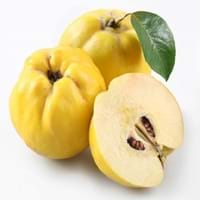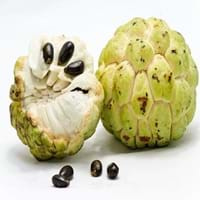Health Benefits
Cancer prevention, Cures gastro-intestinal troubles, Reduces nervous tension, Ulcer prevention
Cancer prevention, Heart care, Regulation of heart rate
General Benefits
Anti oxidant properties, Anti-inflammatory properties, Boosts immune system, Controls blood pressure, Digestive aid, Eye care, Helps in weight loss, Improves blood circulation, Maintains healthy cholesterol level
Anti oxidant properties, Anti-inflammatory properties, Boosts immune system, Controls blood pressure, Digestive aid, Strengthens bones
Skin Benefits
Anti-aging benefits, Reduces wrinkles
Reduces wrinkles, Skin rejuvenation
Hair Benefits
Regulates hair growth
Promotes longer and healthier hair, Treatment of dandruff, Treatment of Lice
Allergy Symptoms
NA
Anaphylaxis, Itching, Skin rash, Swelling of face
Side Effects
Allergic reaction
Allergic reaction, Possibly unsafe during pregnancy
Best Time to Eat
As a snack in the late afternoon, Don't consume at night and before bed, Eat the fresh ones, avoid mixing with any other foods, don't eat after meal., Morning time (before lunch)
As a snack in the late afternoon, Don't consume at night and before bed, Morning time (before lunch)
Vitamin A (Retinol)
Not Available
Vitamin B5 (Pantothenic Acid)
Vitamin C (Ascorbic Acid)
Vitamin E (Tocopherole)
Not Available
Lutein+Zeaxanthin
Not Available
Calories in Fresh Fruit with Peel
Not Available
Calories in Fresh Fruit without Peel
Not Available
Calories in Frozen Form
Not Available
Not Available
Calories in Dried Form
Not Available
Calories in Canned Form
Not Available
Not Available
Calories in Juice
Not Available
Calories in Jam
Not Available
Calories in Pie
Not Available
Season
Winter
Autumn, Spring, Winter
Varieties
Meech’s Prolific, Lusitanica, Champion and Vranja AGM
Andrews, Amarilla, Asca, Baste, Bays, Bayott, Behl, Canaria, Capucha, Deliciosa, Ecuador, El Bumpo, Guayacuyán, Jete, Juniana, Knight, Nata, Popocay, Sander, Smoothey, Tumba, Umbonada, Whaley and White Juliana
Color
Green, Yellow
Green, Yellow
Origin
Iran, South-West Asia, Turkey
Ecuador
Soil Type
Loam, Well-drained
Sandy loam
Climatic Conditions
Warm
Warm
Facts about
- Due to its strong & fruity aroma, brides consumed quince to ensure "perfumed lips".
- It is also called as ‘Pear of Cydonia’, being native to Caucasus and Iran.
- They call it as the ‘golden apple’ of Greek Mythology.
- Cherimoya is also called as custard apple or chirimoya.
- The word cherimoya came from the Quechua word,'chirimuya',which means 'cold seeds'.
- The cherimoya is called as 'the tree of ice cream'.
Top Producer
Turkey
Spain
Other Countries
Algeria, Argentina, Azerbaijan, China, Iran, Morocco, Serbia, Spain, Uzbekistan
Argentina, Chile, Colombia, Egypt, Italy, Mexico, Peru, South Africa, United States of America
Top Importer
United States of America
United States of America
Top Exporter
Argentina
Spain
Botanical Name
Cydonia oblonga
Annona cherimola
Synonym
C. vulgaris
Not Available
Subkingdom
Tracheobionta
Tracheobionta
Division
Magnoliophyta
Magnoliophyta
Class
Magnoliopsida
Magnoliopsida
Subclass
Rosidae
Magnollidae
Order
Rosales
Magnoliales
Family
Rosaceae
Annonaceae
Species
C. oblonga
A. cherimola
Generic Group
Rose
Not Available
Difference Between Quince and Cherimoya
We might think that Quince and Cherimoya are similar with respect to nutritional value and health benefits. But the nutrient content of both fruits is different. Quince and Cherimoya Facts such as their taste, shape, color, and size are also distinct. The difference between Quince and Cherimoya is explained here.
The amount of calories in 100 gm of fresh Quince and Cherimoya with peel is 57.00 kcal and Not Available and the amount of calories without peel is Not Available and 75.00 kcal respectively. Thus, Quince and Cherimoya belong to and category.These fruits might or might not differ with respect to their scientific classification. The order of Quince and Cherimoya is Rosales and Magnoliales respectively. Quince belongs to Rosaceae family and Cherimoya belongs to Annonaceae family. Quince belongs to Cydonia genus of C. oblonga species and Cherimoya belongs to Annona genus of A. cherimola species. Beings plants, both fruits belong to Plantae Kingdom.









